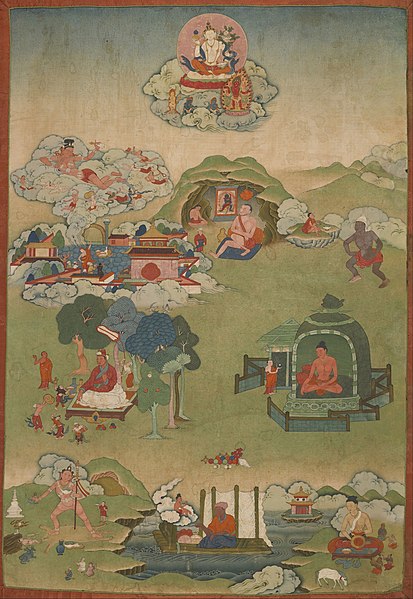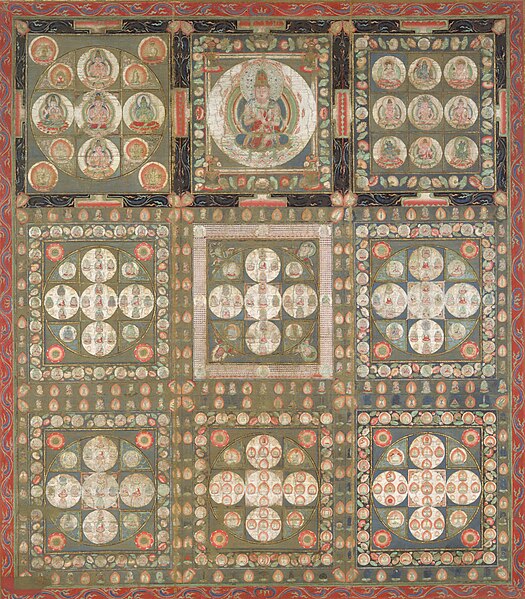Vajrasattva is a bodhisattva in the Mahayana, Mantrayana/Vajrayana Buddhist traditions. In Chinese Buddhism and the Japanese Shingon tradition, Vajrasattva is the esoteric aspect of the bodhisattva Samantabhadra and is commonly associated with the student practitioner who through the master's teachings, attains an ever-enriching subtle and rarefied grounding in their esoteric practice. In Tibetan Buddhism, Vajrasattva is associated with the sambhogakāya and purification practice.
Vajrasattva
Depiction of Vajrasattva seated on a lotus. Japan, 14th century CE
Vajrayāna, also known as Mantrayāna, Mantranāya, Guhyamantrayāna, Tantrayāna, Tantric Buddhism, and Esoteric Buddhism, is a Buddhist tradition of tantric practice that developed in the Indian subcontinent and spread to Tibet, Nepal, other Himalayan states, East Asia, and Mongolia.
A vajra and bell (ghanta), which are classic ritual symbols of Vajrayāna
Mahasiddhas, Palpung monastery. Note the figure of the great adept Putalipa at center, seated in a cave and gazing at an image of the meditational deity Samvara and the figure at the bottom left holding a skull-staff (khaṭvāṅga) and a flaying knife (kartika).
Diamond Realm mandala, based on the tantric Vajrasekhara Sutra, and symbolizing the final realization of Vairocana Buddha in Shingon
Naked tantrikas dancing and eating from skull cups (kapalas), closeup of a Chakrasamvara mandala






